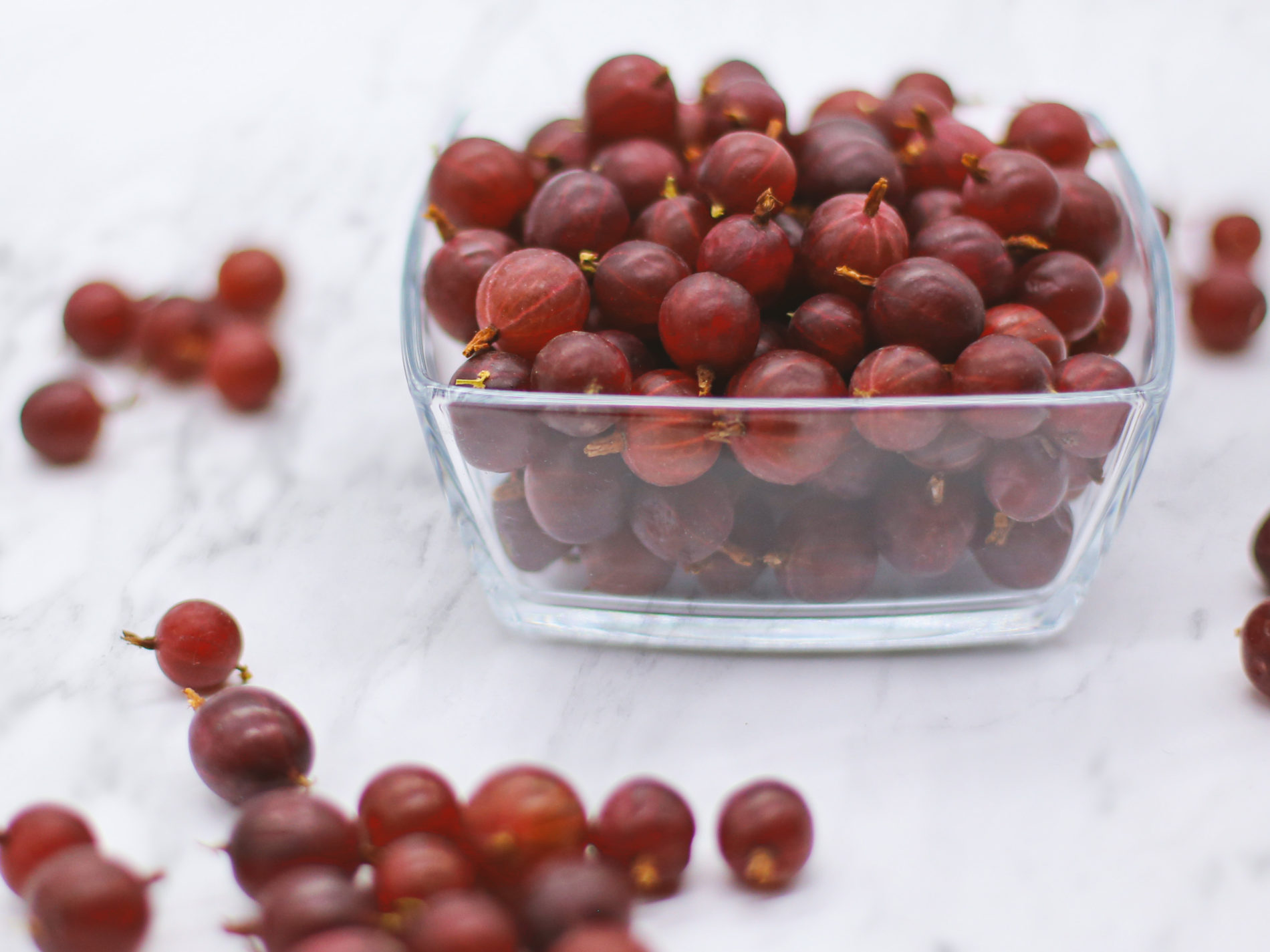When it comes to berries, we are so predictable and, well, boring in our choices, to say the least. Strawberries, raspberries, blueberries, sometimes currants, strawberries again. Tasty, but uninspiringl. Why not digging into the bushes of the wilderness seeking the hidden flavours of nature? This line was probably too dramatic, but the point is: let’s find out new berry varieties that will become a new hit in your kitchen.
Meet European gooseberries! They are one of the most under-rated little fruits grown on bushes. They are similar in size and flavour to grapes, their skins are translucent, varying from white and yellow to green and red with visible streaks running from one pole to another. Their sweetness is often rounded up with tartness and grassiness which is great because of the more nuanced flavours berries can bring. This feature is fantastic for savoury dishes, baking, preserving, and fermenting. It’s also great to ‘dilute’ other sweeter fruits with gooseberries to get a nice balance.
But why is there a goose in a gooseberry? Some believe the name appears to be a corruption of the German Krausbeere or of the earlier French groseille. But others point to the fact that sometimes different plants are simply given strange names because of inexplicable associations that might have come to one’s head.
Apparently, the most natural way to eat gooseberries is to pick them right from the bush, but not all of us are gardeners here and not everyone will like the acidity of the fruits. That’s why there are so many recommendations on sweetened and cooked berries out there. Gooseberry pie, gooseberry tart, gooseberry crumble. Savoury preparations are welcome too. Think roasted goose breast with gooseberry sauce. Could you substitute duck or chicken for goose? Yes, but the whole play on words will disappear, so stick to the original.
To make the sauce you’ll need to put 50 g / 4 Tbsp sugar into a pan with some water and lemon zest, bring to a boil, then add 100 g / ⅓ cup gooseberries and bring to a boil again, then, set aside. Then pour 100 ml / 3.5 oz of red wine into a pot, season with salt and pepper and reduce until thick and syrupy. Add gooseberries, 2 tsp of honey and 50 g / ¼ cup of butter, cook around 3 minutes on medium-high heat and take it off. You are now ready to pour it all over the roasted goose breast for a punny and delicious dinner.











What do you think?